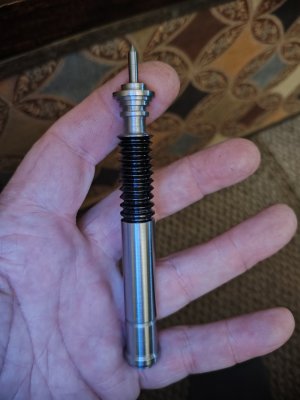- Joined
- Oct 31, 2016
- Messages
- 2,701
Looks good.
I had trouble parting when I first started down this machining rabbit hole. What happens in a light lathe like yours is the blade gets forced down and under the work as you feed the blade in. This is a recipe for disaster.
With your lathe can you run it in reverse without the chuck unscrewing or mount a parting tool holder on the backside of the cross slide?
If you can run in reverse then mount your parting blade upside down. With the blade upside down the blade will get pushed up and away from the work as you feed the blade in.
Better yet if you can mount a tool holder on the backside of the cross slide. If you can mount a holder on the backside of the cross slide, then you can make a special parting tool holder. See this thread by mikey.

 www.hobby-machinist.com
www.hobby-machinist.com
I had trouble parting when I first started down this machining rabbit hole. What happens in a light lathe like yours is the blade gets forced down and under the work as you feed the blade in. This is a recipe for disaster.
With your lathe can you run it in reverse without the chuck unscrewing or mount a parting tool holder on the backside of the cross slide?
If you can run in reverse then mount your parting blade upside down. With the blade upside down the blade will get pushed up and away from the work as you feed the blade in.
Better yet if you can mount a tool holder on the backside of the cross slide. If you can mount a holder on the backside of the cross slide, then you can make a special parting tool holder. See this thread by mikey.

Rear mounting a parting tool ... if you can
I am moving this discussion on rear mounting a parting tool to this thread rather than continue to hijack another one. In this thread, I noticed that @NC Rick had t-slots running the length of his cross slide and suggested to him that he consider making a rear mounted parting tool. For those...
 www.hobby-machinist.com
www.hobby-machinist.com


